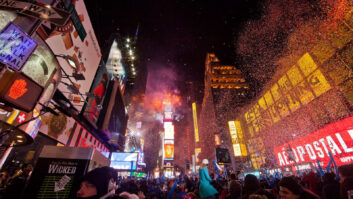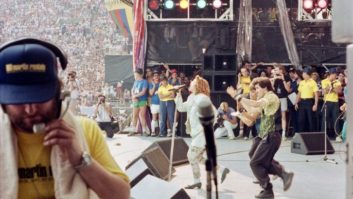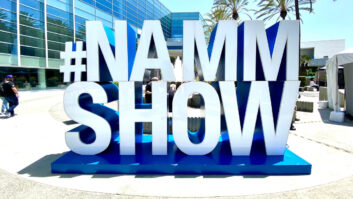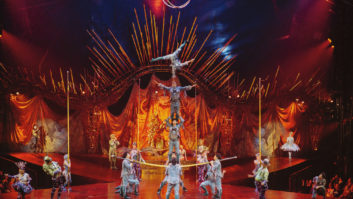Sennheiser recently hosted a few hundred individuals from across the globe comprised of audio engineers, technicians, journalists, writers and more in Hanover, Germany for its Digital 6000 product launch. I was honored to have been a part of the activities and the cultural experience.
After arriving in Hanover, I was invited by to a small dinner in the hotel to meet some of the other audio journalists from America as well as other countries, including China, Spain, France and Turkey. The language of choice at the table bounced back and forth between German and English and some occasional Spanish. It was a broad group of wonderful people with audio interests in common.
On the first official day of the Sennheiser Digital 6000 launch, we were greeted by CEO Andreas Sennheiser and Sennheiser US President Greg Beebe, who together led us on a product journey. “No Compromises” was the echoing phrase Sennheiser associated with the Digital 6000 Series: no compromises because it is designed to give the end-user a product similar to the 9000 Series at a more optimal price point and with more flexibility; no compromises because the Digital 6000 Series has taken into consideration the overwhelming demand of frequency real estate; and no compromises because the 6000 Series still utilizes the Long Range Mode and a proprietary audio codec.
Digital 6000 is backwards compatible with the 9000 Series, allowing a mix and match of receivers and transmitters; it works with standard UHF antennas. There are also seventeen swappable capsules to choose from for the handheld model. Sennheiser has also released the L6000, a rack-mountable charging station for the transmitters’ rechargeable batteries with options for long-term storage.
One topic Sennheiser really framed was its management structure within product development. The company takes a lot of pride in something it calls “Agile Development,” where a product owner manages the decisions and major aspects of the design team.
After our introduction to Digital 6000, we were given time to explore units hands-on and I was able to speak with the product developer individually. I explored some details about the product with him and found out its most noteworthy features. His two key features were RF Performance with the Equal Frequency Distance Grid, which chooses the frequency spacing automatically and keeps the frequency spectrum narrower than is typical; and the audio quality codec that has carried over from the 9000 Series. One difference between the 6000 and the 9000 Series is that the 9000 provides full resolution audio while the 6000 is compressed. We did not get to hear a side-by-side comparison, but we were assured that there would be no audible difference in the listening environment we were in. Why not release the 6000 Series as an “uncompressed” line, you might ask? Well, its compressed audio allows for a more stable Long Range Mode and also assists in keeping costs down (compared directly to the 9000 Series).
In the evening, we were shuttled to another venue and served amazing food and beverage. We were serenaded by a talented female singer and her two bandmates (pictured above) using the Sennheiser Digital 6000. I noted that the system was tuned not quite to my liking when they were playing walk-in music and that translated over to the coloring of the frequency response in the Digital 6000. But did it sound good? Of course it did—it’s Sennheiser.
The next day, we were given a tour of the Sennheiser and Neumann factories and were able to learn about company history. With a background in communications equipment, headphones have long been a big part of the equation. Personally speaking, my favorite piece of gear as an engineer is my Sennheiser HD280 Pro headphone (which actually came in quite handy on the plane ride over).
A key part of our day included learning about AMBEO, Sennheiser’s 3D sound experience. Instead of designing sound into 5.1 or 7.1 or even 9.2 surround parameters, Sennheiser is capturing live audio to be translated into an aural 3D experience in the home. In other words, AMBEO puts you in the concert hall, hearing the sound bounce around you, and it sounds live, just as it would in the venue. It’s an intriguing concept.
It was a wonderful trip and an insightful cultural experience—both experiencing German culture and Sennheiser’s unique culture, too.
Stay tuned to Pro Sound News and prosoundnetwork.com for a full review of the Digital 6000 Series by Liz May in the near future.







